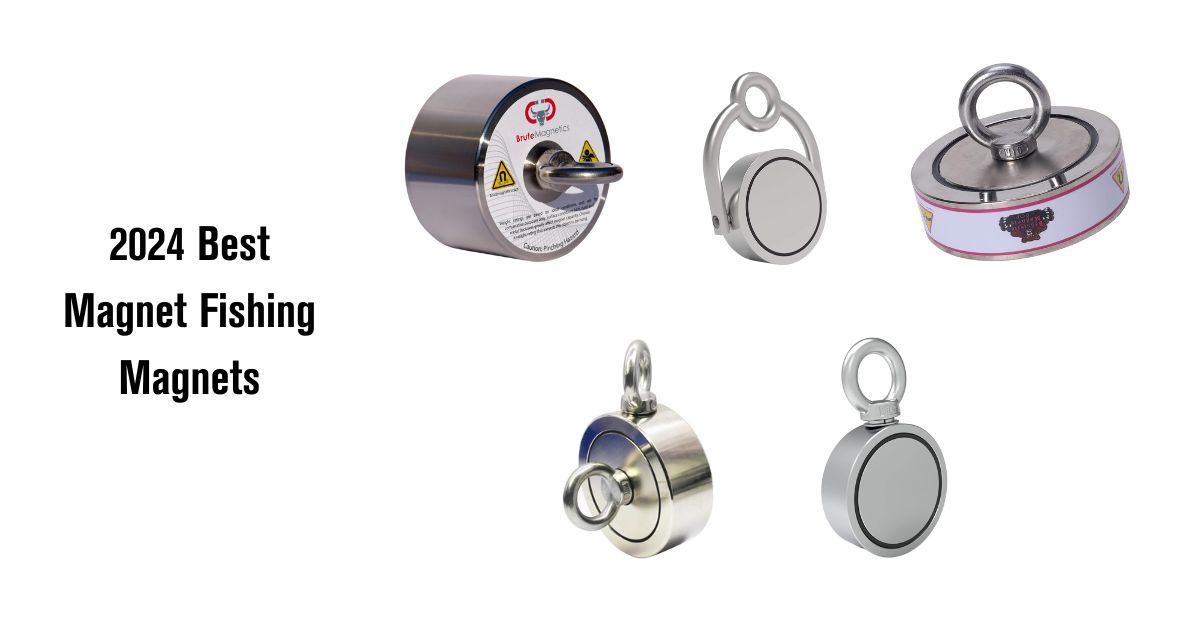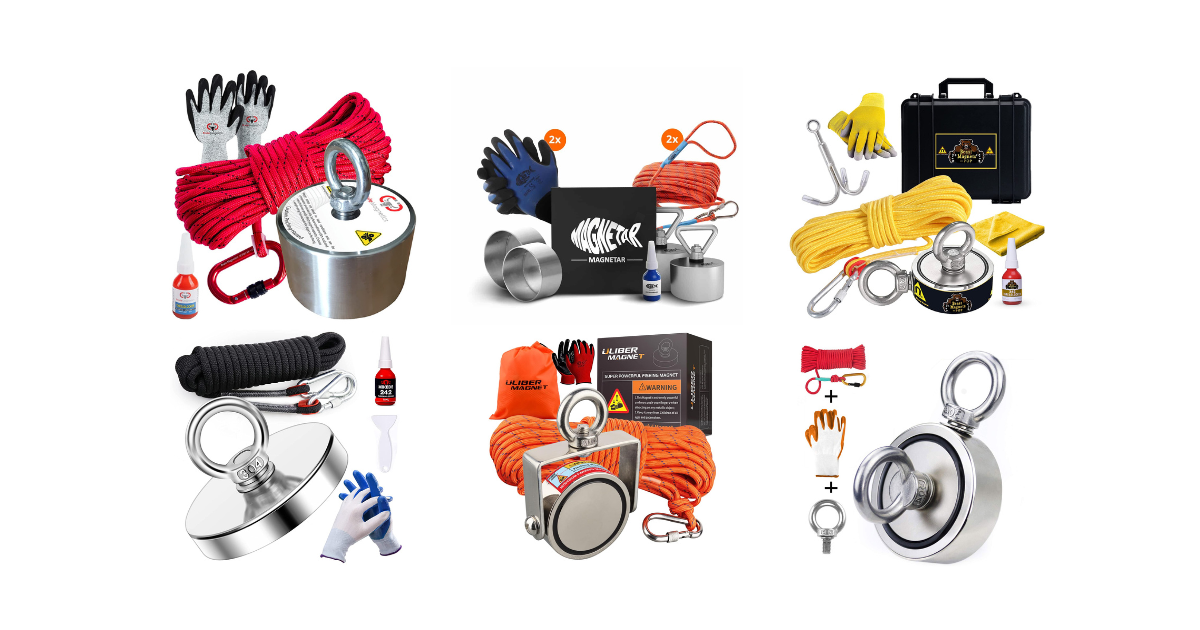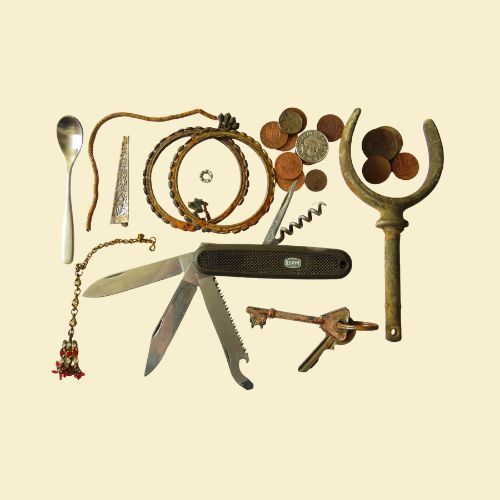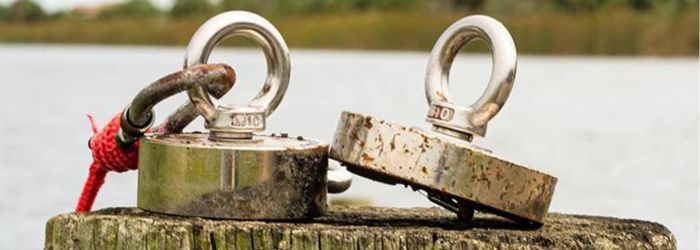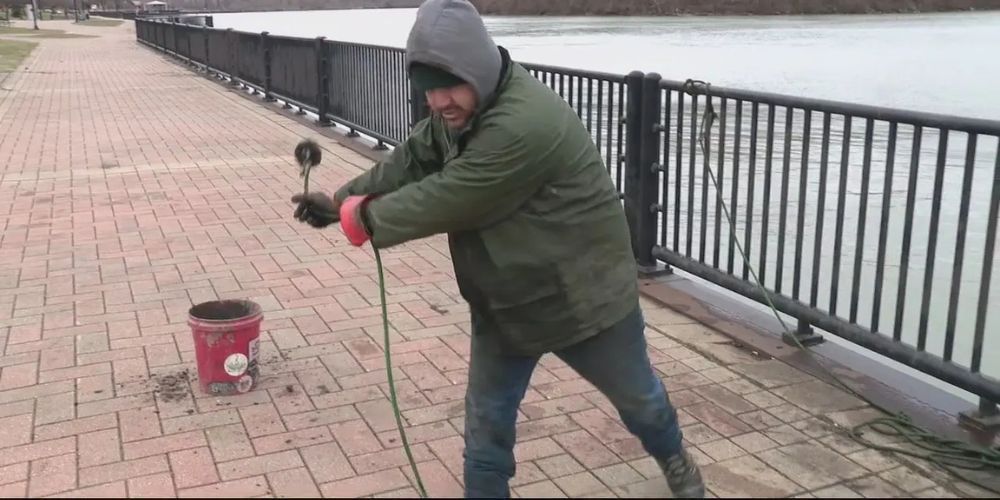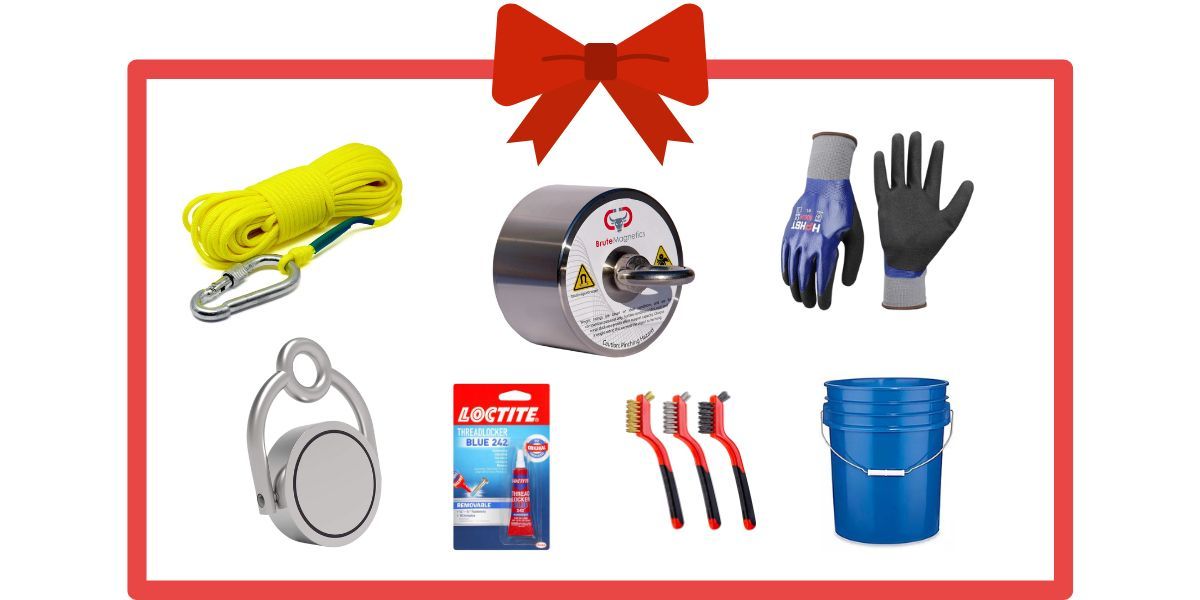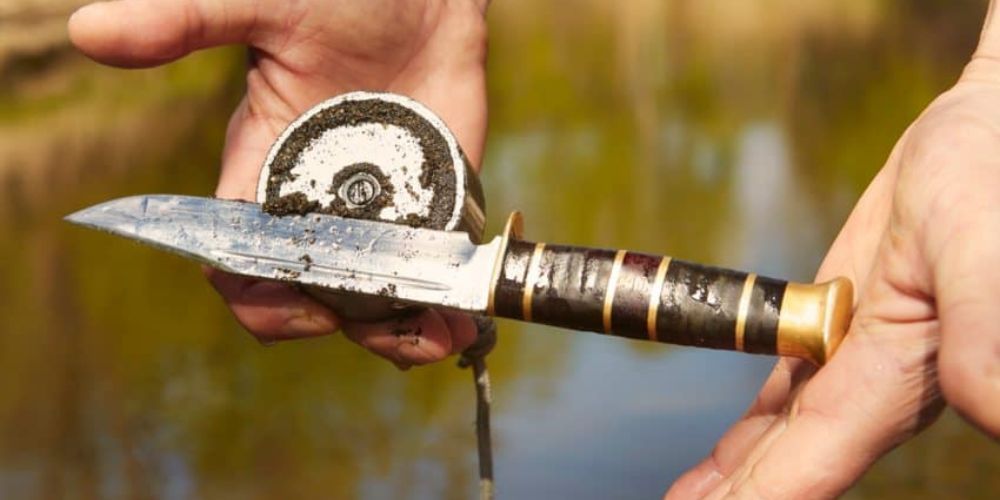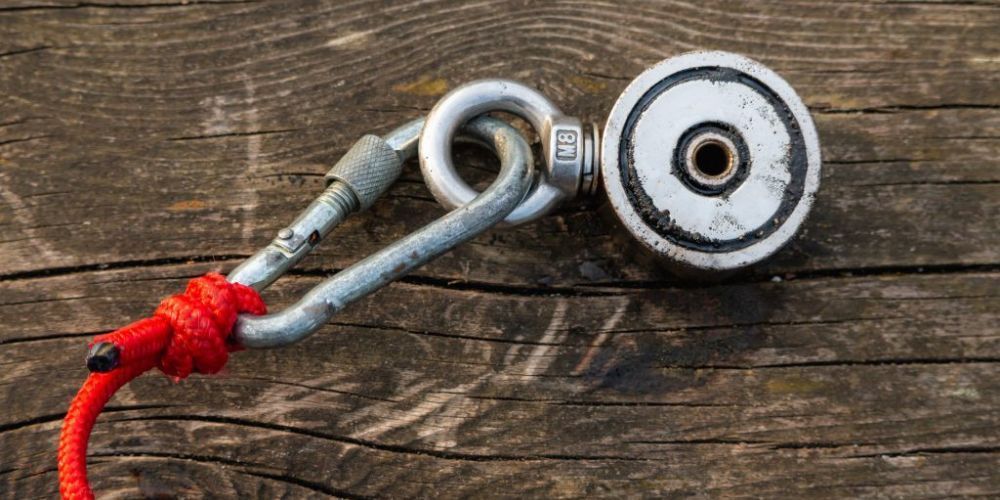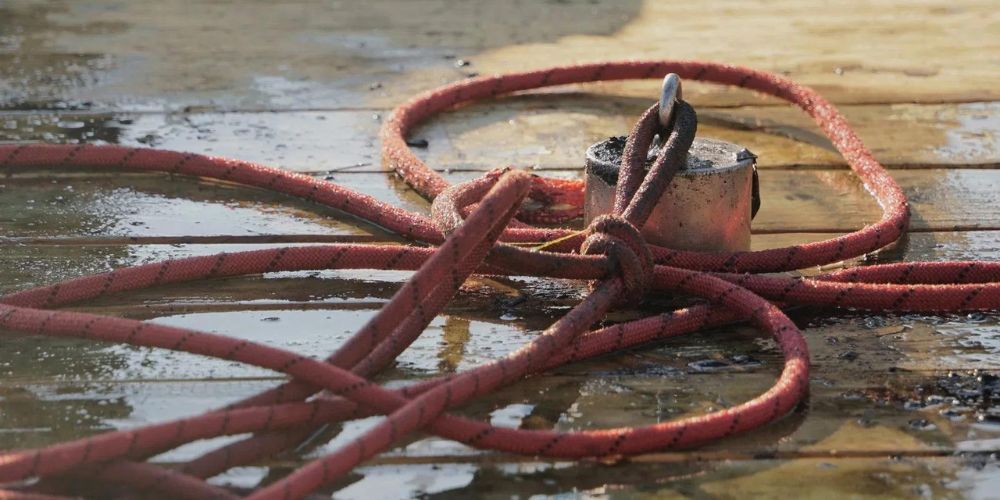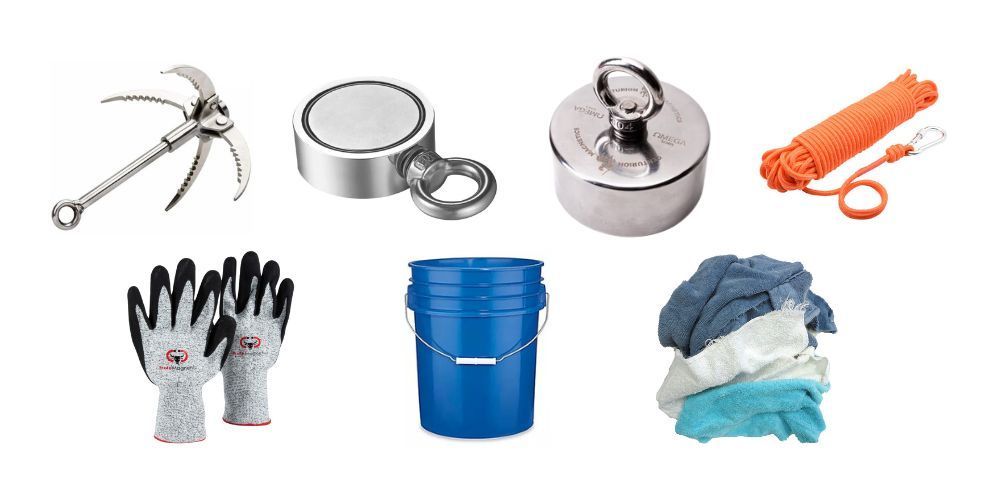How to Locate Popular Magnet Fishing Spots: Tips and Techniques
Magnet fishing can be thrilling, yet finding the right spot often feels like searching for a needle in a haystack. Picture this: an old fisherman’s pier bustling with activity or a river flowing through a town rich with history—these are hotspots where countless treasures may lay hidden just beneath the surface. For instance, magnet fishers have uncovered fishing gear and even smartphones dropped off busy docks, while others have pulled Civil War relics from historic streams. These discoveries show that location plays a crucial role in how successful your outings can be.
Uncovering such treasures requires more than luck—it demands meticulous planning and knowledge about the best locales. We’ve spent hours gathering insights from seasoned magnet fishers and examining popular sites to bring you dependable guidance. You might be surprised to learn that both bustling urban waterways and serene historical sites hold potential for exciting finds. Now let’s explore which kinds of places will boost your chances of making memorable discoveries.
To locate popular magnet fishing spots, research high foot traffic areas such as parks near water bodies, historical sites, and fishing piers where metal objects are more likely to be found. Additionally, utilize tools like Google Maps and local fishing forums to identify potential locations, ensuring you adhere to any regulations governing magnet fishing in those areas.

Best Types of Magnet Fishing Spots
When it comes to magnet fishing, the right spot is crucial for success. Two primary types of areas stand out: water bodies with historical significance and those exposed to routine human activity. Every location you choose needs consideration, particularly environmental factors that could affect what lies below the surface.
High Foot-Traffic Areas
To begin, high foot-traffic areas offer a treasure trove of potential finds. These locations include public parks, busy beaches, and popular fishing piers where people frequently gather. The rationale here is simple; when crowds gather, items tend to slip from pockets, bags, or cooler lids, landing in the water below. Over time, these small accidents create a jackpot of lost items like hooks, lures, and even personal belongings that could catch your eye. Imagine spending an afternoon by the lake and pulling up a shiny set of car keys someone thought they lost forever.
Remember, certain times might yield better results; think about weekends or holidays when areas are likely to be filled with visitors.
Historical Sites
Next on the list are historical sites—archeological gold mines for any treasure hunter. Places around old battlefields or near historic towns can be unexpectedly rewarding. These sites have been visited for generations and often hide artifacts like old coins, tools, or even weapons that provide fascinating glimpses into the past. While searching near these spots can lead to great discoveries, it’s important to check local regulations since some areas may restrict digging or retrieval activities. For example, Gettysburg is renowned among magnet fishers for uncovering relics from battles fought there in the 1860s. According to a 2023 study, dedicated enthusiasts found various collectibles dating back to the Civil War.
It's pivotal not only to focus on human activity or history but also on specific water characteristics that may reveal hidden gems just waiting to be discovered.
Specific Water Characteristics
Certain geographic features, such as river bends, docks, and under bridges, can also attract interesting finds during magnet fishing adventures. These areas act like natural magnets themselves—they accumulate debris that flushes downstream during storms or floods. Small eddies and currents often deposit lost metal items along their banks too.
Ultimately, broadening your horizons to locations that blend both people and nature will keep your magnet fishing excursions exciting and full of surprises.
With an understanding of ideal magnet fishing spots in hand, you can now pave the way for more targeted explorations in various aquatic habitats rich in untapped treasures.
Rivers, Lakes, and Streams
Rivers are dynamic environments that efficiently transport debris and lost items downstream. As the water flows, it carries a variety of metallic objects ranging from coins to larger abandoned items like vehicles. One effective strategy is to scout out bends and slower-flowing sections where sediment tends to accumulate.
For instance, when I magnet fished in a gentle curve of the Colorado River, I unearthed several old bicycle frames and numerous fishing lures. It’s fascinating how the geology and flow patterns can determine where treasures hide beneath the surface.
A survey of magnet fishing enthusiasts reported that 60% found valuable items in rivers near historical trading routes. This insight underscores the significance of selecting specific locations—those that carry historical weight often yield interesting finds.
Lakes
Lakes are not just tranquil spots for picnicking; they are also treasure troves waiting to be explored. Lakes with recreational facilities tend to attract many visitors, leading to lost items near popular spots. Focus on areas such as docks or boat launches where metal objects could easily slip into the water.
Rooting through these locations has rewarded me with everything from stunning vintage keys to unusual bottle caps marked with long-forgotten logos. It’s always thrilling to think about the story behind each item you discover.
Many lakes have designated swimming areas where beachgoers may inadvertently drop their belongings. Scanning these shallow waters can lead to interesting finds like jewelry or sunglasses.
Streams
While streams may be smaller than rivers or lakes, they possess their own charm and potential for discovery. Particularly near old mining sites, streams can offer hidden treasures in the form of metal fragments from tools long since discarded.
The key here is patience; because streams flow quickly, you must carefully observe how debris collects in eddies or behind rocks. On one visit to a stream winding through a historic mining district, I located several rusty nails and even remnants of a miner's shovel—the evidence of human history etched in metal.
With this understanding of natural water bodies behind us, it's important to remember that human-created structures may provide even more fascinating opportunities alongside their accessibility challenges.
Bridges, Docks, and Piers
Bridges are truly some of the most fruitful spots for magnet fishing. They connect various landscapes while also serving as transit points for both pedestrians and vehicles. Because of their frequent use and the constant flow of traffic above, they act as magnets—not just for people, but for lost items too. With the hustle and bustle of daily life, it's no surprise that things occasionally slip from pockets or get left behind. Experienced magnet fishers often share tales of diverse finds under these spans—from modern car parts to historical artifacts.
A seasoned magnet fisher once discovered a vintage pistol tucked beneath a bridge in Boston. Such stories underscore the treasure trove potential that these structures hold. It’s intriguing to think about all the countless items that have ended up in waterways over time, each with their own story.
Docks
Moving on to docks, these spaces are like treasure chests waiting to be unlocked. Positioned where land meets water, docks are places of activity—boating, fishing, and recreation abound. Unfortunately for those who frequent them, it’s not uncommon for gear or personal belongings to accidentally fall overboard during a busy outing. Items such as fishing rods, tackle boxes, and sometimes even mobile phones end up submerged, allowing magnet fishers a chance to retrieve valuable—or at least interesting—lost items.
For instance, I remember helping a friend retrieve a rusted fishing reel that had been tossed carelessly aside on the dock after his day trip. Engaging with the community shows how essential it is to educate both boaters and fishermen about careful practices near docks, which might minimize losses for everyone involved.
Piers
Piers add yet another layer of possibility when it comes to finding lost treasures. Often found in tourist-heavy areas, piers can experience high volumes of activity—especially right after events like festivals or storms where the excitement leads to careless drops. After a storm in 2022, a pier in Florida revealed an impressive collection of treasures: gold rings, coins, tools, and more—all carried away by turbulent waters before eventually becoming accessible once more.
The possibility of uncovering such captivating finds is what keeps many enthusiasts returning time after time. Each expedition is not only about recovering lost pieces but also about connecting with history and the community that frequents these spaces.
As we continue this exploratory journey into the art of locating hidden gems in the water, it's essential to understand how modern tools and technology can significantly elevate our search strategies and improve our results.
Using Maps and GPS Tools
Digital tools can streamline the process of discovering great magnet fishing locations, turning hours of searching into a more focused and productive outing. One popular method is using Google Maps and Google Earth for their extensive satellite imagery. These platforms allow you to zoom in and explore potential fishing spots, like bridges, piers, and other areas with historical significance that could be rich with submerged treasures. By examining street views, you can also gauge accessibility—knowing whether there’s parking nearby or if you’ll need to trek along a path to reach the water's edge.
Another layer of convenience comes from employing modern GPS devices. These handy gadgets can mark successful finds on the map and save them for future visits, ensuring that you don’t waste time trying to rediscover those prized locations. More advanced models even allow you to take notes about specific conditions at each spot. If a particular area yielded valuable finds due to water levels or weather, jotting that down could inspire future trips. This becomes particularly useful when planning outings around seasonal changes or anticipated weather conditions.
Dedicated Apps
Specialized apps, like Fishbrain, have revolutionized how anglers track their fishing patterns. Not only do these applications provide detailed maps of hotspots, but they also create a community-driven experience where users document and share their magnet fishing successes with others. Imagine browsing through a treasure trove of photos submitted by fellow enthusiasts who’ve unearthed antique coins or unexpected relics from local waterways. You gain not just information on where to fish but anecdotal insights about what to expect when you get there.
Combining these digital tools effectively can empower you as an angler—helping you navigate the best locations while also tapping into the knowledge base created by fellow fishermen. With each tool working in concert, your next magnet fishing expedition promises not only enhanced productivity but an enriched experience overall.
As we continue exploring this exciting hobby, we'll uncover how online resources and community engagement can further enhance your magnet fishing adventures.
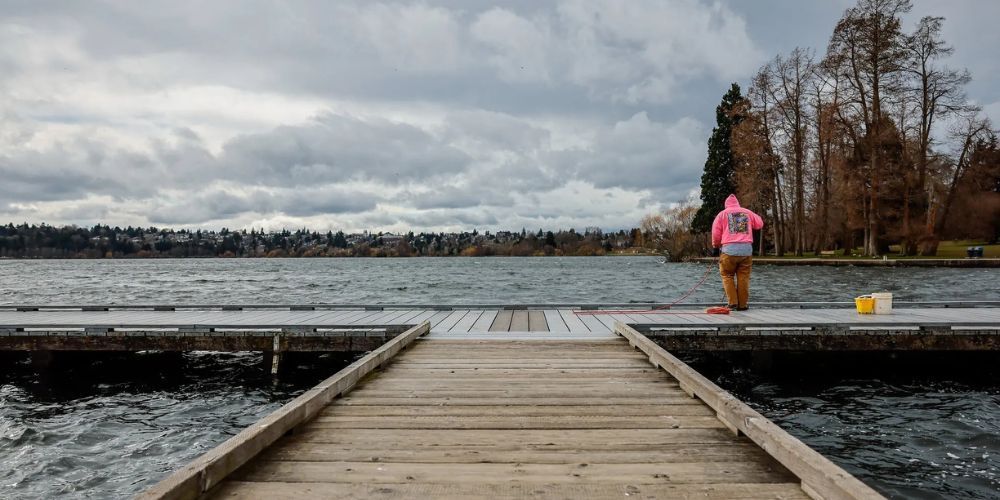
Online Research and Community Insights
The internet has transformed the way we gather information, and the magnet fishing community is no exception. With a few clicks, you can tap into an extensive network of enthusiasts eager to share their knowledge. Engaging in online discussions is not just about finding precise locations; it’s about connecting with others who share your passion. They offer practical advice, share their experiences, and often post about past finds at various locations.
Forums and Social Media Groups
Joining forums like those on Reddit can be a game-changer for anyone looking to enhance their magnet fishing experience. In these spaces, members openly discuss their favorite locations. You'll find treasure troves of information, where users detail their own successful hauls or misadventures at local spots. This isn't merely anecdotal; it often includes valuable insights that can steer you towards less familiar areas that are ripe for exploration.
Further, the sense of camaraderie built through shared experiences fosters a welcoming environment where newbies and veterans alike feel encouraged to learn from one another.
YouTube Channels
YouTube serves as an invaluable resource for visual learners. Channels dedicated to magnet fishing, such as Adventures with Purpose, showcase popular fishing spots through engaging video content. Watching these channels offers more than just tips; they provide real-life demonstrations of the techniques being discussed. By visualizing how successful anglers navigate certain locations or tackle tricky finds, you acquire concrete strategies that you can adapt in your own pursuits.
Local Fishing Clubs
Another effective way to enhance your magnet fishing skills is by getting involved with local clubs. By networking with other fishers in your area, you'll gain insight into regional hotspots that might have gone unnoticed to the casual fisherman. A recent survey indicated that a healthy 4 in 5 magnet fishers benefitted from recommendations made by club members regarding new locations and techniques. Being part of a club also puts you in touch with experienced anglers who can mentor you through trials, improving your skills over time.
As you explore these connections and resources, the advantages found in specific locations will further enrich your magnet fishing adventures, providing depth to your understanding of where to cast your line next.
Weighing Location Advantages
Each site has its own unique characteristics that can significantly impact your findings. Urban areas often have a high frequency of visitors, increasing the chances of discovering contemporary items like lost jewelry or everyday objects accidentally discarded into the water. However, this increased foot traffic typically comes with a downside—higher levels of pollution and debris, making the cleaning process after retrieval all the more important.
On the other hand, rural locations might present a more serene environment, offering the allure of historical artifacts like old tools or remnants from bygone eras. But remember, these spots generally require more commitment to reach and may pose challenges in navigating through rural terrain.
The difference between urban and rural magnet fishing isn’t merely about what you might find; it reflects your fishing strategy as well. If you lean towards urban areas, consider positioning yourself near places frequented by people during events—beaches, lakesides, or popular parks where something may have fallen during a gathering. Urban treasures often include electronics that were tossed aside and lots of coins or watches.
In contrast, when you venture out to the countryside, be prepared for adventure. You may discover intriguing relics that tell stories from the past. Just be aware that such excursions might require permissions, especially if you're exploring private property. It’s always a good practice to double-check local regulations before setting out.
Accessibility
Accessibility plays an influential role in determining your success with magnet fishing. Easily accessible sites like city parks tend to attract more enthusiasts due to foot traffic; however, this could mean increased competition and potentially fewer valuable finds left behind as items are frequently retrieved. These convenient spots are great for quick trips when time is limited.
| Location Type | Pros | Cons |
|---|---|---|
| Urban Areas | Varied finds | Potential overfishing |
| Rural Areas | Historical gems | Challenging access |
| Easily Accessible Locations | Convenience | Higher retrieval competition |
| Secluded Spots | Undisturbed treasures | Verify if permission is needed |
As you weigh these factors—urban versus rural locations and accessibility—each trip presents not only an opportunity to recover lost items but also a chance to engage with new environments and uncover hidden narratives waiting just below the water's surface. Understanding how to approach the unique challenges associated with these environments is vital for any successful expedition.
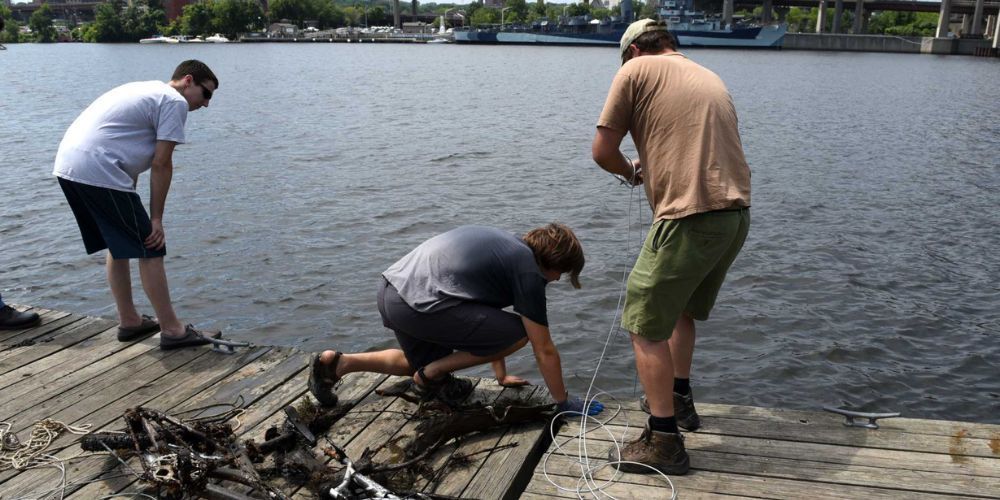
Safe Magnet Fishing Practices
Safety should be at the forefront of your mind whenever you head out for some magnet fishing. A moment's inattention can lead to accidents, whether it's slipping on a wet surface or encountering sharp objects hidden beneath the water. Therefore, understanding key safety measures becomes paramount not only to protect yourself but also to foster a responsible culture among fellow enthusiasts.
Personal Protective Equipment (PPE)
Investing in personal protective equipment is one of the simplest ways to ensure your safety while magnet fishing. For instance, wearing sturdy shoes helps provide a firm grip on potentially slippery rocks or muddy banks. It might seem trivial, but they can significantly reduce the risk of falls. Gloves are equally important; they shield your hands from sharp edges and splinters you may encounter while rummaging through debris.
Remember, those gloves aren’t merely for comfort; they act as your first line of defense against unexpected hazards.
Avoiding Hazardous Finds
While discovering treasures is thrilling, it’s crucial to remain vigilant about what you pull from the water. If you happen upon questionable items such as ammunition or unknown chemicals, do not take chances by attempting to handle them yourself. The best course of action is to contact local authorities who can safely dispose of these materials. Mismanagement of such dangerous finds may lead to serious accidents.
Environmental Considerations
Another key aspect of safe magnet fishing practices involves nurturing our environment. As hobbyists, we hold a responsibility to keep our fishing spots clean; this means removing any trash you might find alongside your own discarded materials. Always dispose of non-valuable metals in designated recycling bins, and make it a point to leave the area better than you found it. Taking these small but impactful steps not only safeguards our ecosystem but also promotes the longevity of this fascinating pastime.
By integrating these fundamental safety practices into your magnet fishing routine, you enhance not only your own experience but also contribute to a more responsible angler community overall.
Overall, implementing safety measures can enrich your magnet fishing adventures while ensuring that you're part of an environmentally conscious community.
What are the best places for magnet fishing?
The best spots for magnet fishing include rivers, lakes, ponds, and urban waterways where human activity has historically been high. Areas near old bridges, docks, and piers tend to yield the most interesting finds since people have likely dropped metal items over the years. Urban rivers and canals are often gold mines for magnet fishing due to a combination of discarded items, lost tools, and sometimes even historical artifacts. Parks with ponds or small lakes, especially near popular walking paths or picnic areas, are also good choices, as visitors may have inadvertently left behind metallic items.
How do I know if a magnet fishing spot is legal?
Before heading out, research local laws and regulations regarding magnet fishing. Start by checking with the local Department of Natural Resources (DNR) or equivalent authority. Many areas have specific rules on what types of waterways are permissible for magnet fishing. Avoid private property without permission, and always check for any posted restrictions in the area, as some bodies of water may be off-limits to protect wildlife or preserve historical sites. Additionally, review any environmental guidelines to ensure that your magnet fishing activities are eco-friendly.
What should I look for when choosing a magnet fishing spot?
When selecting a spot, look for signs of historical human activity. Areas near abandoned buildings, historic sites, old factories, or well-traveled boat ramps often have items that have been submerged for years. Use satellite images or online maps to scout out potential locations, and check for water depth, which influences your magnet’s effectiveness. A shallower area may yield more frequent finds, but deeper spots can reveal older, more valuable items that have been left undisturbed for longer periods.
What tips do experienced magnet fishers have for identifying promising areas?
Experienced magnet fishers recommend looking for locations with high foot traffic, such as popular parks near water bodies, old fishing spots, and historical sites where items may have been discarded over time. Additionally, areas around bridges and piers are often fruitful due to the accumulation of lost valuables. In fact, statistics indicate that nearly 40% of successful finds occur in such locations, as these hotspots tend to attract more debris and lost items, making them ideal for magnet fishing enthusiasts.
Author: Will Flaiz


